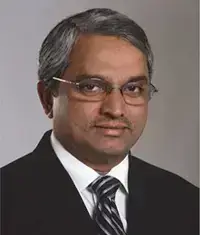Mechanism of waterproofing by proper cement hydration
One of the products of the hydration of cement is cement gel or Tobermorite, which is formed up to a water-cement ratio of 0.65 to 0.7. At a lower w/c ratio, it is formed more and more and vice versa. This hydration product has a minor coefficient of permeability, i.e., 7×10-14 cm/sec, and blocks the pores and capillaries in the concrete.
This can result in good waterproof concrete of 10-10 to 10-12 cm/sec. However, at an average job, we get the permeability between 10-6 and 10-8 cm/sec. This is mainly due to uncontrolled w/c ratio, lack of curing, and other lousy detailing.
Combination of conventional and non-conventional ways
Various ways of waterproofing the structures are recommended. However, a discerning client and the consultant must study all the possible parameters, positive and negative, and then come to a recommendatory conclusion.
Conventional ways of waterproofing are like brickbat coba followed by IPS. Brickbat coba is generally used to provide a slope to the treatment, and the IPS layer works as an impermeable treatment by itself, which also assumes the slope of brickbat coba.
Though otherwise found moderately successful, today, due to the speed of the work, quality of sand, inadequate curing to the concrete, which is made from finer grade cement, and many other related reasons, the IPS is seen to crack and disintegrate, allowing an early entry to the water.
The brickbat coba is not otherwise supposed to be waterproof, but on the contrary, it is absorbent, which accumulates the water. On saturation, the brickbat coba attempts to transfer the water further, which generally penetrates the slab and penetrates more quickly if the same is porous or full of cracks.
Concrete, inherently not entirely impermeable, can suffer decreased impermeability from construction compromises, leading to issues like unsightly leaks, steel corrosion, and structural damage. As the Best waterproofing company, Sunanda Global specializes in innovative solutions that address these challenges comprehensively, ensuring resilient, long-lasting waterproofing for concrete structures.
Click below to read the next part of the article.
Options available for waterproofing
About the author
Dr. S. K. Manjrekar (Ph.D. Bombay University – 1977), Dr. S. K. Manjrekar is Chairman and Managing Director of a well-known construction chemicals company in India – M/s. Sunanda Speciality Coatings Pvt. Ltd., for the last 40 years. Operations in UAE, Oman, Nepal, Tanzania, and the USA.
He is actively working on several technical and administrative committees of the American Concrete Institute (ACI) in the USA.
He teaches ACI concrete field testing courses to engineers in India as a ‘Train the Trainer’ initiative.
He has published more than 200 papers in various national and international journals.
He has given over 100 keynote lectures on concrete, corrosion prevention, Waterproofing, Nanomaterials, etc.
Lectured extensively internationally in Countries – United Kingdom – London, Leeds University, United States of America – Pittsburgh, Malaysia, Oman, Dubai, Sharjah, Kuwait, Romania, Hong Kong – Hong Kong University, and many more as an invited keynote speaker.
He is the guest editor of International journals in the UK, USA, and Mexico.




I’m not that much of an internet reader, to be honest but your blogs really nice, keep it up! I’ll go ahead and bookmark your website to come back down the road